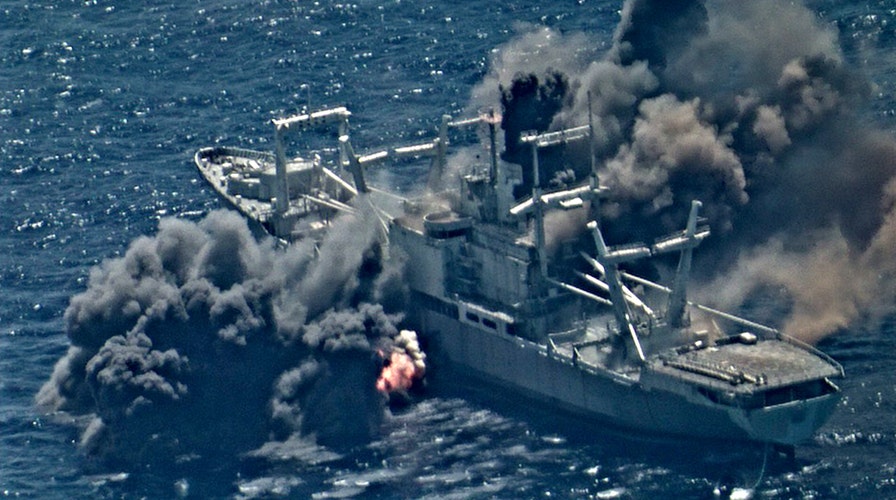Fox News Flash top headlines for September 1
Fox News Flash top headlines are here. Check out what's clicking on FoxNews.com.
As part of the annual U.S.-led Rim of the Pacific exercise, the Navy sank the USS Durham, a decommissioned amphibious cargo ship, as seen on video.
The Durham, named after the city in North Carolina, was commissioned in 1969 and served during the Gulf War. It was pulled out of service in February 1994.
Footage of the sinking showed a trio of anti-ship cruise missiles gliding across the water’s surface before shooting into the port side of the Durham.
“Simulation is a critical part of our training but there is nothing better than to conduct live-fire training,” Royal Australian Navy Capt. Phillipa Hay, commander of RIMPAC 2020 Task Force One, said in a statement.

200830-N-NO842-1002 PACIFIC OCEAN (Aug. 30, 2020) Live fire from ships and aircraft participating in the Rim of the Pacific (RIMPAC) exercise sink the decommissioned amphibious cargo ship ex-USS Durham (LKA 114) August 30. (U.S. Navy courtesy photo)
“Sinking exercises are an important way to test our weapons and weapons systems in the most realistic way possible. It demonstrates as a joint force we are capable of high-end warfare.”
Ten nations, 22 surface ships, one submarine, and approximately 5,300 personnel participated in RIMPAC between Aug. 17 to 31 in the waters surrounding Hawaii, Task & Purpose reported.
CHINA PLANNING TO DOUBLE ITS STOCKPILE OF NUCLEAR WARHEADS: PENTAGON
This year’s RIMPAC exercises are "designed to foster and sustain cooperative relationships, critical to ensuring the safety of sea lanes and security in support of a free and open Indo-Pacific region," according to the U.S. Navy's 3rd Fleet.

200830-N-NO842-1001 PACIFIC OCEAN (Aug. 30, 2020) Live fire from ships and aircraft participating in the Rim of the Pacific (RIMPAC) exercise sink the decommissioned amphibious cargo ship ex-USS Durham (LKA 114) August 30. (U.S. Navy courtesy photo)
"The exercise is a unique training platform designed to enhance interoperability and strategic maritime partnerships," it added.
CHINA CLAIMS US SPY PLANE ENTERED NO-FLY ZONE
The focus on a free Indo-Pacific region comes as the Pentagon released a report on China’s plans to assert hegemony over the region by building up its military forces and nuclear arsenal. Beijing views the U.S.’ relationships in the Indo-Pacific as “destabilizing and irreconcilable” with the People’s Republic of China’s sovereignty in the region, according to the report.
CLICK HERE TO GET THE FOX NEWS APP
"Not only has Beijing clearly been excluded again this year, but RIMPAC 2020 itself seems to be a stage for the Pacific navies to simulate their China scenarios," the Asia Review reported.





